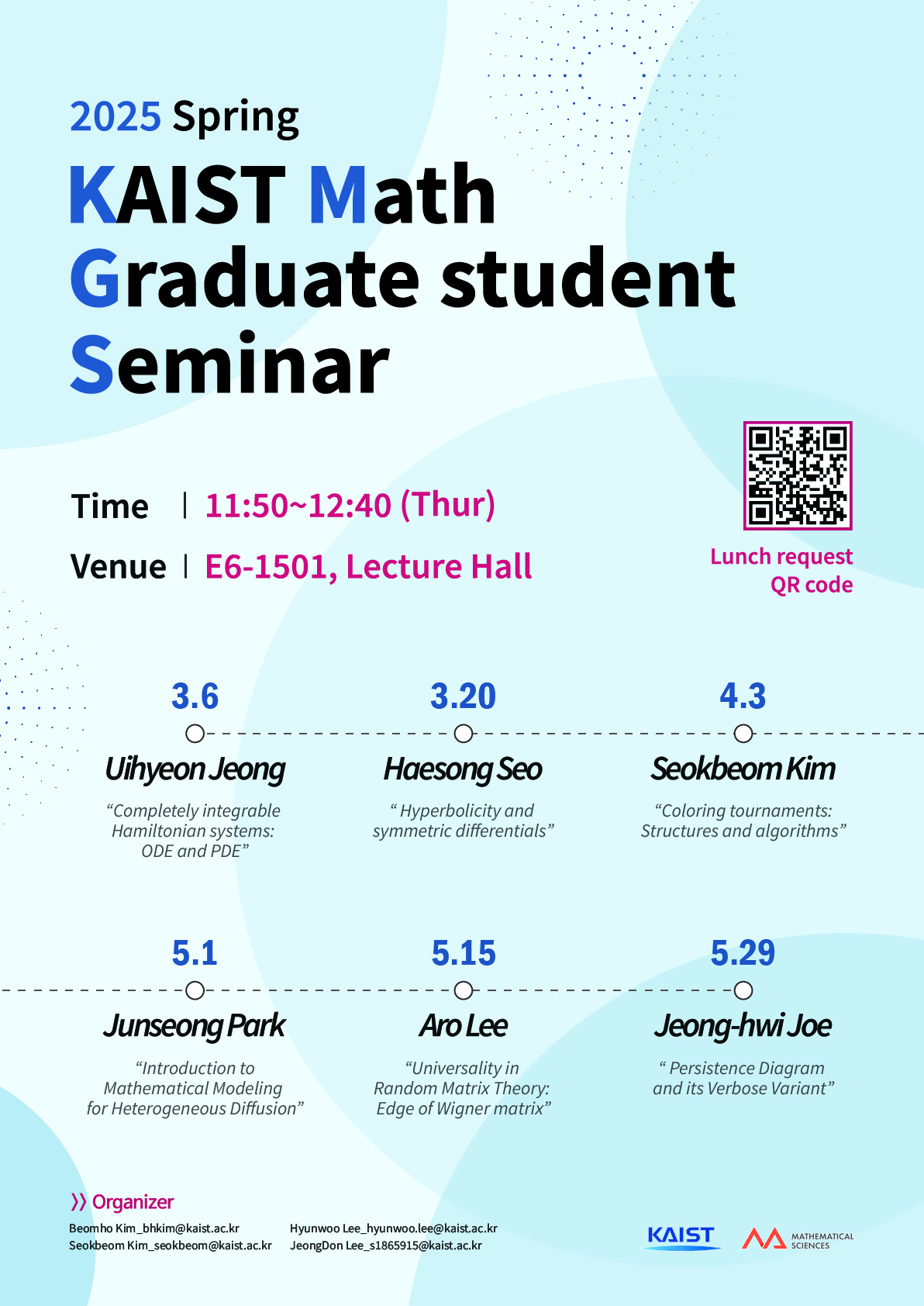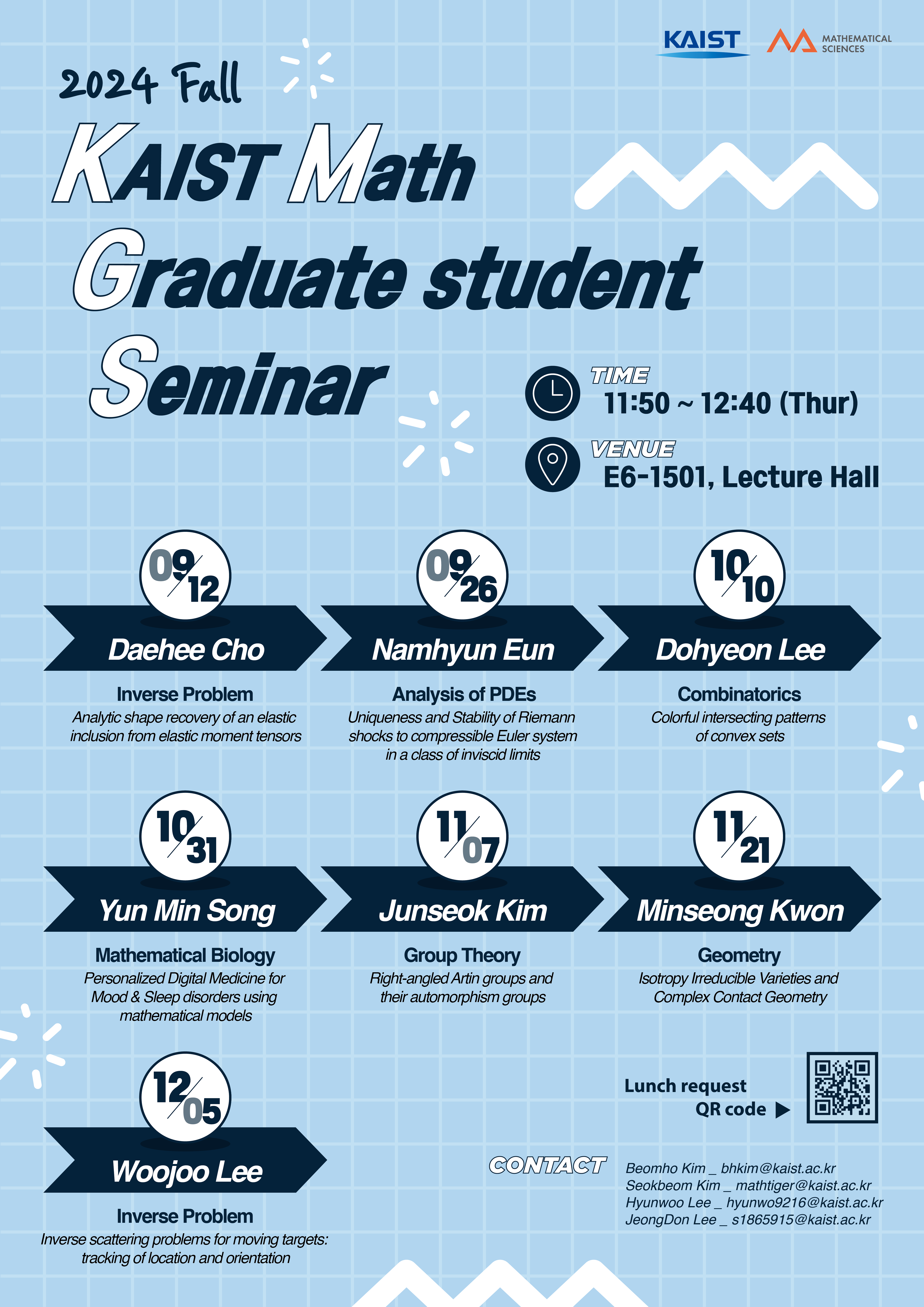The 40th KMGS will be held on November 21, Thursday, at the Natural Science Building (E6-1) Room 3438. We invite a speaker Minseong Kwon from the Dept. of Mathematical Sciences, KAIST.
The abstract of the talk is as follows.
[Speaker] 권민성 (Minseong Kwon) from Dept. of Mathematical Sciences, KAIST, supervised by Prof. 황준묵, Jun-Muk Hwang from IBS CCG
[Title] Isotropy Irreducible Varieties and Complex Contact Geometry
[Discipline] Geometry
[Abstract]
Isotropy irreducible spaces are first introduced by Riemannian geometers, as homogeneous real manifolds carrying a canonical invariant metric. Such spaces are classified by Manturov (1960s), Wolf (1968) and Krämer (1975), and their classification provides a number of interesting new examples, for example satisfying the Einstein condition. In this talk, I will introduce a complexified version of isotropy irreducible space, which is called isotropy irreducible variety. In the first half, I will explain geometric properties of isotropy irreducible varieties, and give several non-classical examples belonging to algebraic geometry. Next, I will present a connection between isotropy irreducible varieties and complex contact geometry, which has not been observed in the real setting.
[Language] Korean but English if it is requested


